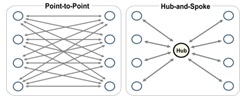Assignemnt:
1. Production Possibility Frontiers: strawberries or basil
Table: Hours spent sleeping or engaging in sex
|
Strawberry bushels
|
Basil bushels
|
|
0
|
35.00
|
|
1
|
34.00
|
|
2
|
32.79
|
|
3
|
31.24
|
|
4
|
29.23
|
|
5
|
26.63
|
|
6
|
23.32
|
|
7
|
19.15
|
|
8
|
14.00
|
|
9
|
7.73
|
|
10
|
0.00
|
a. Draw a production possibilities curve for your two-acre farm between growing strawberries and basil. Is there a tradeoff between these two? How is a tradeoff shown in your graph? (Make sure you label you axes.)
b. Is the trade-off constant or does it change as you have more or less strawberries or basil? How is the trade-off represented in the slope of the line? Why does the trade-off change?
c. What is the price of basil? Add a column to Table 1 and give the price of additional bushels of basil or strawberries. Where is the price of basil on your graph? What happens to the price of basil as you are growing more basil and fewer strawberries? Why does the relative price change and how does this relate to the neoclassical theory of production?
d. Suppose basil restores soil productivity drained by producing strawberries. Draw a PPF for strawberries and basil assuming that they are production complements. Does this mean that we can have a free lunch?
2. Capitalism
a. How hard do people work when they are working for themselves? What determines how much they work? Use the Marxist circuit of capital language (e.g. C-M-C') to answer whether there is a tendency for independent workers who control the means of production to work hard to increase their production.
b. How do things change when workers lose control of the means of production and have to sell their labor power to a capitalist? Show the circuit of production for marijuana under the new, capitalist relations. Will the formally independent workers now stop working when they have enough money for the desired consumption?
c. How does the capitalist make a profit from a relationship where he pays the workers a fair value for their time and sells at a fair price? Are capitalists guaranteed a profit? How could the capitalist not make a profit?
d. What do capitalists do with their profits, and how does this explain the expansion of capitalism throughout the world and into areas of household production?
3. Read the interview with Nancy Folbre, "Household Labor, Caring Labor, Unpaid Labor" (Real World Micro, 7.5)
a. What does Folbre mean by "caring labor"? What types of caring labor are counted when we compute gross domestic product? How would our estimates of gross domestic product change now and over time if we included caring labor?
b. Who generally performs caring labor, both within households and in the market? How might our measure of personal productivity change between people of different genders, races, and ethnic groups if we included the value of caring labor?
c. Is transit gendered? Adult men are generally employed in labor-force activities where they leave homes in the morning to go to workplaces in central locations and then return in the evening. Adult women, by contrast, do more care labor and are more likely to engage in "chain trips" with multiple stops with children, elderly relatives, food shopping, etc. as well as paid work, all of which often involve moving across the periphery of towns or cities.
i. From this perspective, compare the gender impact of municipal policies that give priority to moving people in and out of central locations at peak times versus policies to move people between locations in the periphery.

4. Externalities. The Trump administration is trying to reverse the Obama administration's "Clean Power Plan" restricting carbon dioxide emissions from power plants and regulations requiring new coal burning power plants to capture carbon dioxide emissions in order to encourage the development of clean solar and wind energy and slow climate change. The Supreme Court has required the Obama administration to justify environmental regulations on a cost-benefit basis and the Trump administration claims the economic benefits from reducing greenhouse gas emissions are less than the costs of cleanup. In making this argument, the Trump administration chooses not to count among the benefits reduced healthcare costs, or the benefits of breathing cleaner air and drinking cleaner water. Critics argue that in addition to creating tens of thousands of renewable energy jobs, the clean power plan would generate $54 billion in health climate benefits, avoiding 90,000 childhood asthma attacks and saving 3600 lives per year.
a. Should all pollution to be prevented? Is there an "efficient" level of pollution greater than zero? What would constitute an efficient level of pollution?
b. Could the market lead to the efficient level of pollution if there are full and clear property rights? How might this operate between young children with asthma and the owners of coal-fired power plants?
c. Why didn't the market prevent this toxic pollution without government involvement? Read "Mapping Environmental Injustice" (Real World Micro, 6.7.) Why is pollution concentrated in poor and nonwhite neighborhoods? In what ways does this reflect a failure of the market solution? Given your argument in part B above, which do you think is better: government regulation or market solutions?
5. Is inequality necessary? Is it good?
a. Should we equalize income for all Americans? Explain the utilitarian and Rawlsian arguments for egalitarian social policies.
b. Should we equalize income for all Americans? Explain alternative arguments against egalitarian policies, such as natural rights arguments (John Locke and Robert Nozick) and utilitarian arguments (Arthur Okun).
c. Gender and inequality: are egalitarian policies gendered? Do women benefit more from egalitarian policies that reduce disparities in income?